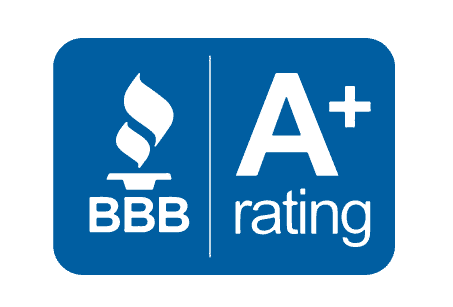
Suboxone is a medication used for opioid replacement therapy.
Doctors sometimes prescribe it as an alternative to methadone. It includes two active ingredients, buprenorphine and naloxone. The drug was initially designed for pain management but has since become an option for treatment of people attempting to stop using opioids such as heroin, morphine, oxycodone or fentanyl.
Some healthcare providers consider suboxone to be the primary option for opioid replacement treatment as they regard it as safer than methadone. In most cases, it has a lower chance of overdose, interacts less dangerously with other drugs, and gives people a higher level of functionality while taking it. Suboxone has therefore become more prominent in Canada as the opioid crisis worsens. In some cases, however, methadone is more effective for opioid replacement therapy. Suboxone treatment can also only begin during a specific phase of the withdrawal process.
While suboxone can be effective in treating opioid addiction, it also has a range of potentially dangerous side effects. It is also an addictive substance and can cause withdrawal symptoms in people trying to taper off or stop using the drug. It should only be taken exactly as prescribed under medical supervision. Someone using suboxone should never exceed the recommended dose or use the drug more frequently than advised. This blog explains how suboxone works and details its benefits, side effects and risks.
Suboxone Treatment – How It Works
Suboxone comes in the form of a tablet or film. Users ingest it orally. It contains buprenorphine and naloxone. Buprenorphine produces the same effects as opioids , but in a milder form. This means that it reduces craving and withdrawal symptoms for people addicted to opioids. Naloxone is an opioid antagonist, meaning it blocks receptors in the brain and prevents the body from experiencing the effects of opioids.
Suboxone is becoming increasingly recognised as an opioid addiction treatment method in the Canadian healthcare community. However, currently, there is a shortage of healthcare professionals trained to administer it. Many physicians also remain reluctant to prescribe it due to its side effects and addictive potential.
One particular issue with suboxone treatment is that doctors can only administer it during a particular phase of withdrawal. If taken outside of this period of the process, it can cause severe sudden withdrawal, with symptoms more pronounced and potentially more dangerous. When prescribed for opioid replacement therapy, suboxone can make withdrawal safer and less physically and mentally difficult. After the initial withdrawal process, medics taper the user off suboxone so that the person can continue their recovery without it.
Risks of Addiction and Abuse
One of the major concerns about suboxone treatment is that people attempting to stop using opioids can become addicted to suboxone instead. While the drug is far less addictive than an opioid such as heroin, oxycodone or fentanyl it is still possible to become dependent upon it. While clinicians prescribe it to make the withdrawal process safer and less difficult, it also has its own withdrawal symptoms. This can make it very difficult for users to end their use.
When taking suboxone, it is essential to abide strictly by the prescribing doctor’s instructions. Exceeding the advised dose can be very dangerous. It can also lead to a dangerous addictive pattern. Even if you miss a scheduled dose of suboxone, you should avoid taking two doses within a short period. Doctor’s can provide specific instructions on these issues. If you find yourself craving suboxone or wanting to exceed the recommended dose, you should contact your doctor immediately to address this. Doctor’s will also only prescribe a limited number of refills to lower the likelihood of addiction or abuse.
While manufacturers produce suboxone in tablet form, users abusing it may crush it to snort or inject. This is extremely dangerous and also increases the likelihood of addiction and overdose. It can also cause serious damage to the heart and respiratory system.
Other Risks
Suboxone, and particularly its buprenorphine component, can cause a number of serious side effects. These include nausea, fever or chills, body aches, dizziness, difficulty breathing and drowsiness. Fatigue, confusion and blurred vision are also common side effects. Withdrawal from suboxone can also cause aches, abdominal pain, nausea, vomiting and insomnia. It may also lead to mental symptoms such as anxiety, depression, mood swings and confusion. For people dealing with concurrent mental health disorders alongside their addictions, suboxone may also exacerbate the symptoms of these conditions. The nature of these side effects makes it essential for medical professionals to monitor and support anyone using suboxone or experiencing withdrawal from it.
In some cases, suboxone can cause respiratory problems, resulting in slowed breathing. This can cause loss of consciousness and in some cases can be fatal. Users should never take suboxone alongside sedatives or with alcohol, as this increases these risks.
Suboxone can also cause damage to the liver. Doctor’s should always examine the liver before prescribing it and should continue to monitor it for the duration of the treatment. Abusing suboxone can also lead to permanent liver damage. Pregnant people should also not be take suboxone. As the drug may be dangerous for people with health conditions, particularly of the heart, it is important to consult with a physician and disclose any pre-existing issues before beginning use. It is also dangerous to drive while under the influence of suboxone.
Benefits of Suboxone and How It’s Used
While suboxone carries these risks and potential side effects, it can also provide crucial support for people trying to stop using opioids. It can help someone through the withdrawal process and reduce the chance of relapse. It also limits the danger presented by certain withdrawal symptoms. Doctors will usually taper users off suboxone, under supervision, once withdrawal symptoms have eased.
However, it is vital for the user to take suboxone exactly as recommended by a medical professional. The process should be medically managed throughout. Exceeding recommended doses in terms of quantity or frequency of use is extremely dangerous and can lead to harmful symptoms, overdose or addiction. Suboxone should also be considered a transitional support; after the withdrawal process, users should gradually taper off the drug to continue their recovery.
If you have questions about the use of suboxone in addiction treatment, contact Trafalgar Addiction Treatment Centres today.




